Andrew and I volunteered at a Fort Ancient site with local archaeologists. This archaeology adventure schooling unit taught us that excavating is more than scraping, sifting, and making square holes in the ground. Instead of seeing history inside a museum, we found ourselves holding 2000-year old artifacts! But that wasn’t all, we also practiced the ancient art of hunting!
Adventure Schooling Preparation
Adventure schooling with Andrew requires some extra teaching on my end. I never take Andrew into a situation unless everyone understands Prader-Willi syndrome and my role as his advocate. The initial meeting is most important, so Andrew and I met one of the archaeologists at the lab. Here, we toured the lab and signed waivers. We learned all about the history of Fort Ancient and the area where we would be working. In addition, we learned what the archaeologists expect from the volunteers.
To make any situation positive, I cannot assume anything, so at home, we reviewed the rules and expectations. I try to include scenarios that might happen if we aren’t careful or if we choose to not listen. Even with planning, I know from experience that there will be moments of disconnect, either on Andrew’s part or mine. Those are the forehead slapping moments when you think, “ARGH! I should have thought of that.”
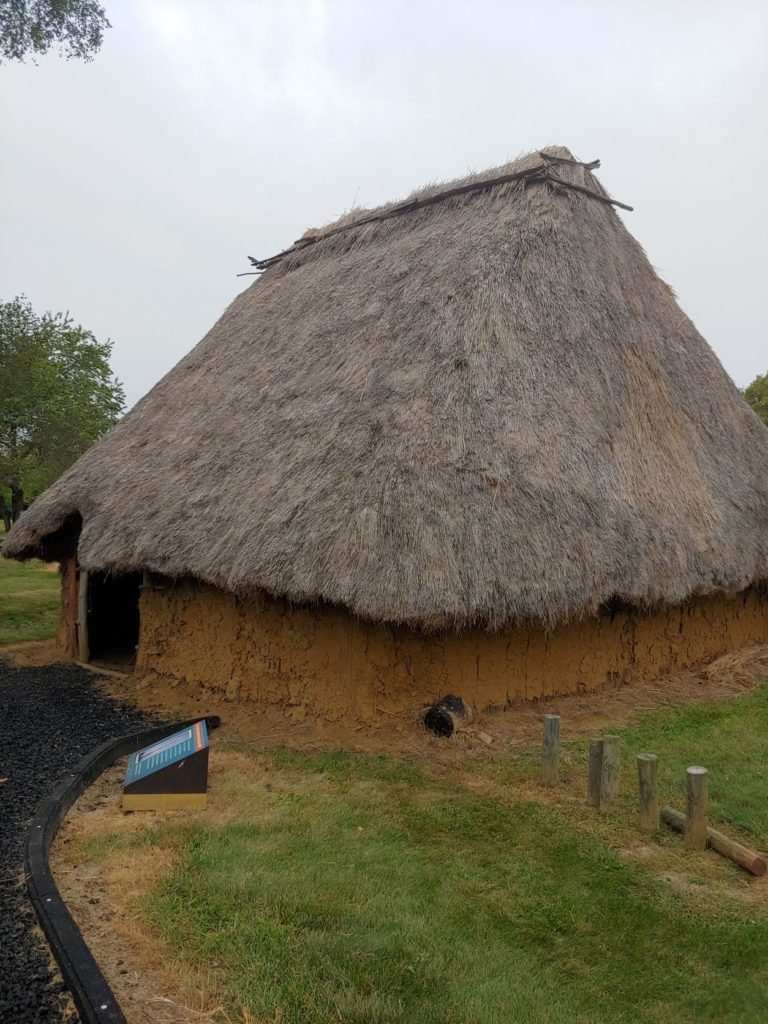
This replica is loacted at Sunwatch Indian Village, Dayton, OH
The Fort Ancient Site
The Fort Ancient Culture existed around 1000 – 1650 A.D. and can be found in parts of West Virginia, Ohio, Kentucky and SE Indiana. The archaeology site where Andrew and I volunteered had a population of about 500 inhabitants. The rectangular houses surrounded an open plaza. When the inhabitants of Fort Ancient moved to a new dwelling, they used the old site as a trash pit. Examining discarded garbage from 2000 years ago, gives clues about the lives of the people who lived on that site. By the time the European settlers came to North America, the Fort Ancient Culture had vanished.
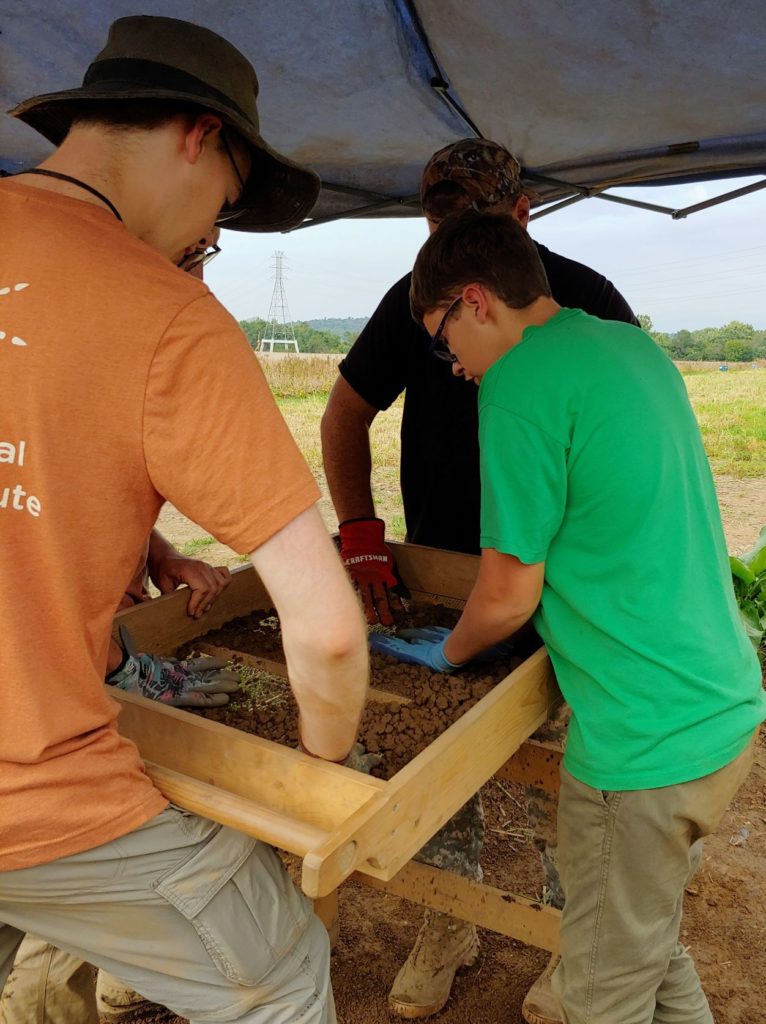
firewood, and ancient seeds.
Meeting the Archaeology Team
The archaeologists and other volunteers were wonderful with Andrew. It turns out scraping with a trowel is a very difficult gross motor task, but each person who worked with Andrew was patient and encouraging. On day one, Andrew’s first find was a clay ash ball. The workers stored this soft, white ball of ash in its own container. This way it was fully protected so that it didn’t rub against other objects. It will go to the lab for examination this winter. Andrew’s second find was a piece of fire rock, and shortly after a piece of pottery shard. Artifacts aside, Andrew’s favorite activity was unearthing freshwater mussle shells.

Those Square Holes
I always wondered how archaeologists made such perfect square holes. We found out first hand! They do it very carefully and methodically with sharpened, flat shovels. Andew learned how to cut a straight wall (with a lot of help!) and then we sifted every ounce of dirt removed. It looked like plain dirt and I didn’t see anything of importance, but once we started sifting, pottery shards appeared!
Stratigraphy
Shaving off layers of history is a time consuming yet important part of an archaeologist’s job. Stratigraphy is the science of studying layers which assumes that the oldest layer is the deepest. This, however, can get messy because earthquakes, landslides, and burrowing animals sometimes mix the different time periods. The real job begins when one must determine why an ancient artifact from one time period is found in a newer layer!
Archaeologists divide excavation sites into sections, and when artifacts are found they get recorded, mapped, and bagged. We learned to separate the artifacts into different bags based on organic materials and non-organics. All organic materials such as charcoal, seeds, and animal bones were put into small foil bags where they will be examined and categorized. The age of these items will be done by use of Carbon 14 dating at an outside lab.
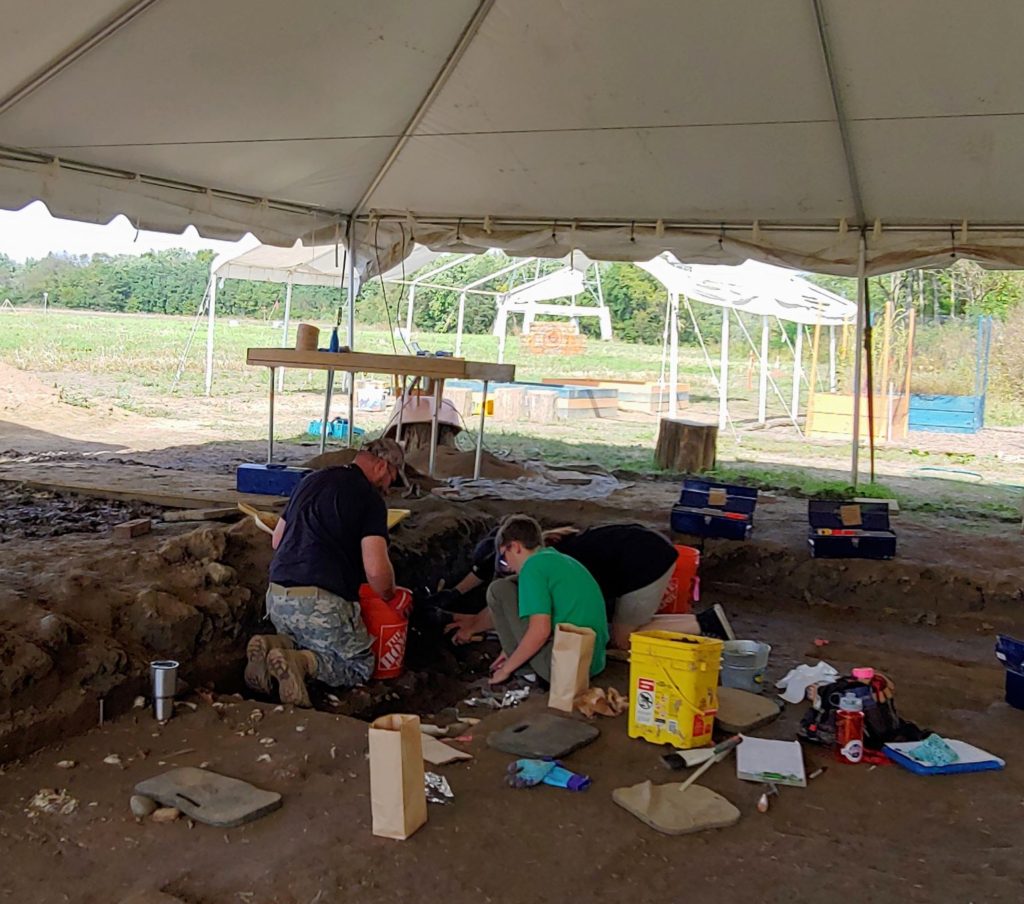
found a beautiful, little, triangular arrowhead within the bones.
Their Garbage; Our Classroom
From the items we found, we know that the Fort Ancient inhabitants ate freshwater mussles (tons according to Andrew), deer, elk, turkey, birds, corn, and Chinopodium (Quinoa). They lived in rectangular homes that were built built around an open square or common grounds. The archaeologist pointed out how the adjacent soy bean field grows differently as the crop approaches the healthier soil of the native site. He also pointed out a burial mound at the opposite end of the property. Archaeologists are not looking for human remains, so the excavation site stays well away from the burial area.
If an archaeologist stumbles upon human remains, the dig stops and the bones must be proven non-forensic. The remains will be turned over to the descendants to which they belong. In 1990, Congress enstated NAGPRA, or the Native American Graves Protection and Repatriation Act. It states that human remains of any ancestry must be treated with respect and that the remains belongs to the descendants.
Andrew and I recently watched a video about an excavation at an Aztec temple, in Mexico City, where archaeologists uncovered a tower of skulls. We asked why it was okay for the tower to be photographed and publically displayed. Evidently it is different when it is bones from your own people, plus archaeology rules are different for every country.
A 2000-Year Post
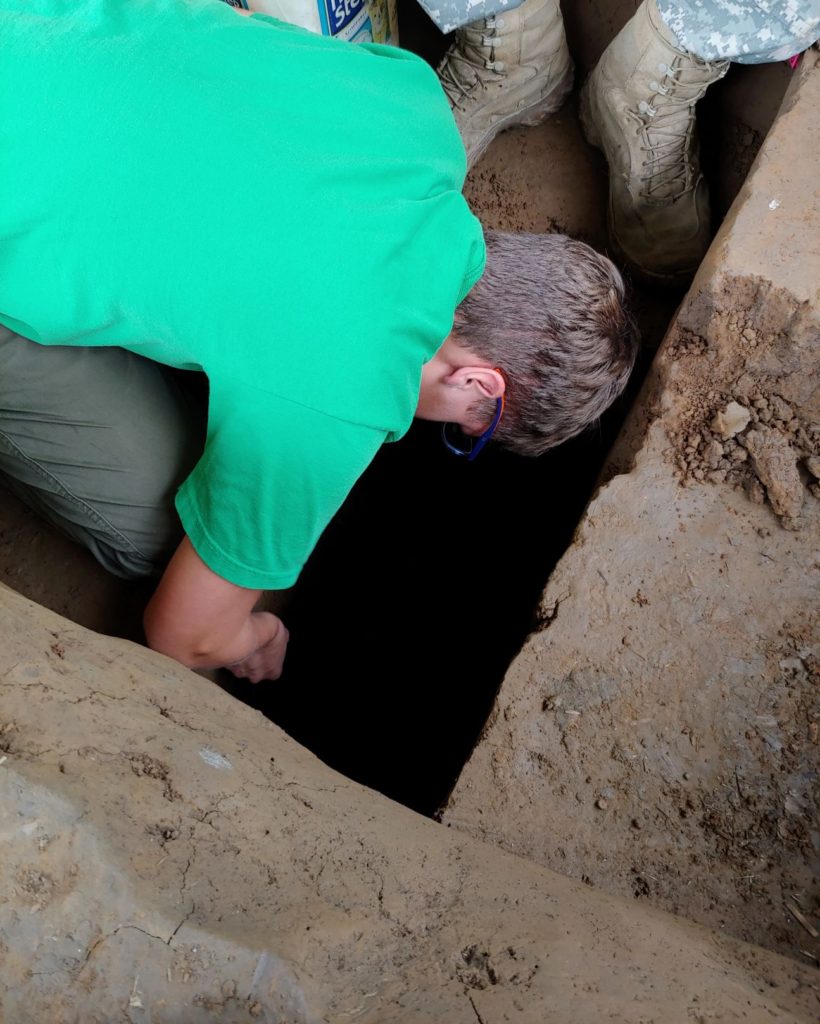
At the bottom of the deepest hole the archaeologist had Andrew scraping out an area around a house post. This job required some really long arms! Agile Andrew had no problem hanging into the hole to scrape out a layer of soil.
Experimental Archaeology
*The best way to understand artifacts is to learn how they were used.
Experimental archaeology involves learning how the cultures of the past used artifacts. Hands-on skills fills in a gap that just seeing an artifact cannot teach. Andrew and I learned how to use an atlatl and got to try out luck at bow hunting. Our prey was this painted mammoth.

(and thhird) shot made it SO close to the bullseye!
What is an atlatl?
An atlatl handle is attached to a 5 foot spear by inserting the sharp tooth end into a small indentation at the end of the shaft. The thrower uses wrist action to release energy into the spear by way of the atlatl handle. The spear is released and flies through the air while the atlatl remains in-hand. This invention increases the distance and speed of the flying spear. It also allowed the hunter to stay a safer distance away from charging herds.
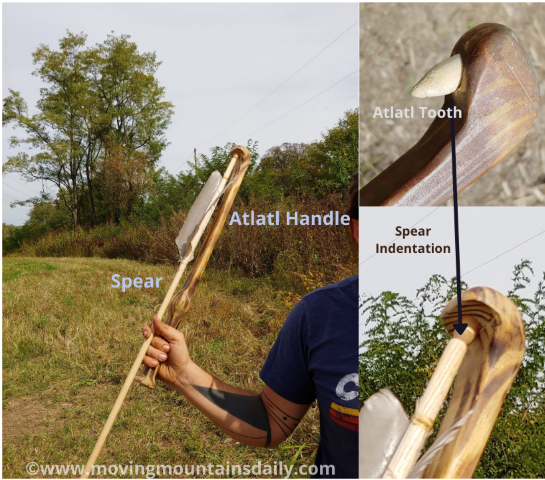
Andrew had a few good throws but my second and third shots made it quite close to the bulls eye. I am rather competitive and after struttin’ around a bit, and spouting that I could provide mammoth for dinner, my luck went downhill fast! I never did as well again. (Grrr)
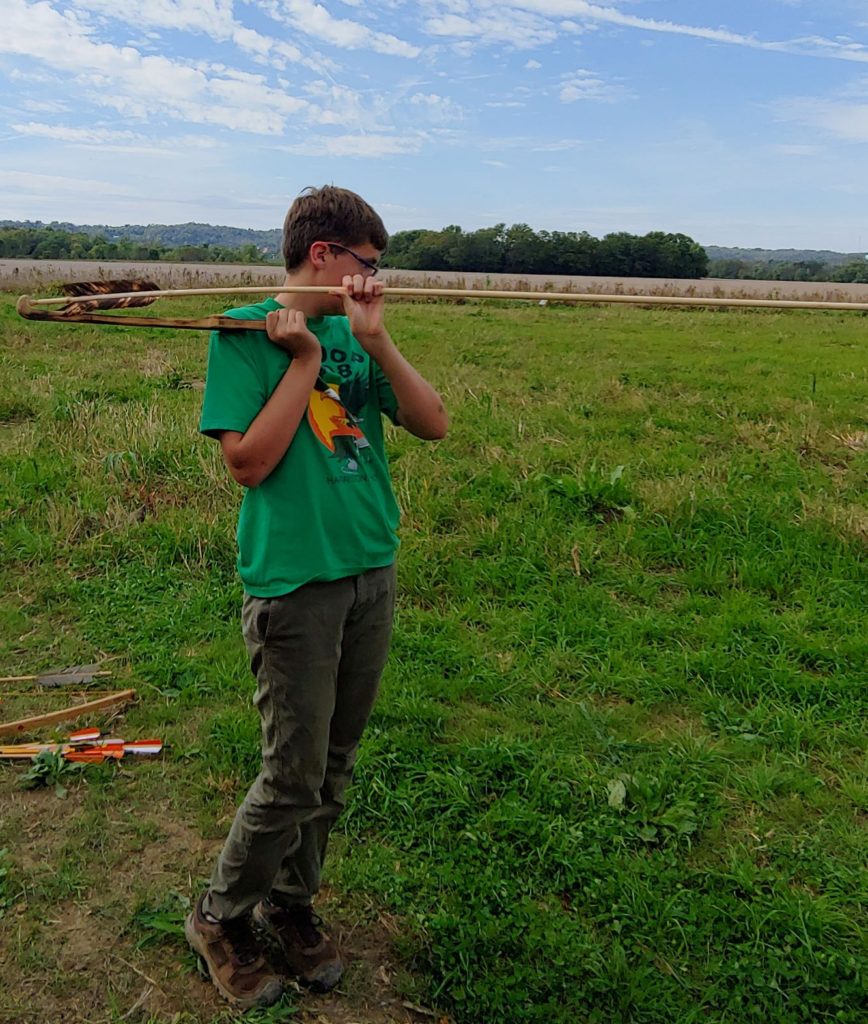
both hands to steady the five foot spear.
Bow and Arrow hunting
We also practiced hunting with a bow made from Osage Orange which was quite different than using a compound bow. Andrew had archery practice at camp this past summer and did much better with the bow than with the atlatl. Either way, though, if Andrew and I had to provide a meal I think it would be based on luck, not strength!
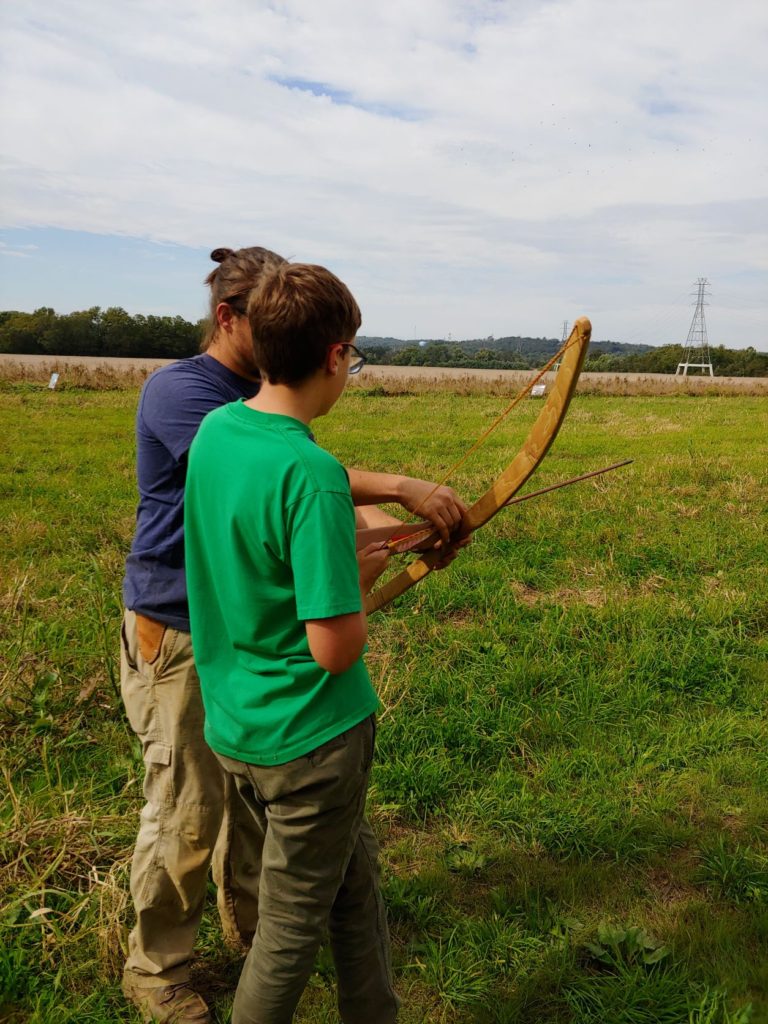
Amature Archaeology and Vandals
Every state has their own archaeology laws. In our state it is illegal to begin a dig in your backyard without a permit. The best way to categorize and explain history is to call the experts. Disturbing layers is fascinating to amature treasure hunters but it also destroys the story. This is why I like to teach Andrew to stick to the sand bars on the river when we surface hunt.
Unfortunately there are treasure hunters, ummmm nope, we’ll call them ‘vandals’, who like to break into archaeology sites after hours. In hopes of combating vandalism, our local archaeologists believe that getting the community involved is the first step. Volunteers, news articles and communications about the site involves the community in the history that happened on their doorsteps. The public is more apt to guard and protect the local sites because they have an avid interest in making sure the site remains unharmed.
Have you read about our Native American Adventure Schooling Unit? Check out:
How to Incorporate Native American Studies into Adventure Schooling


